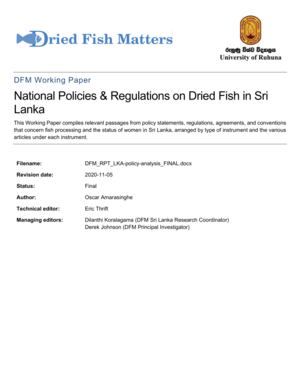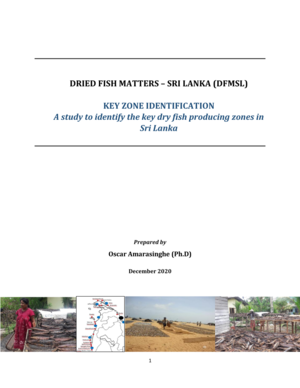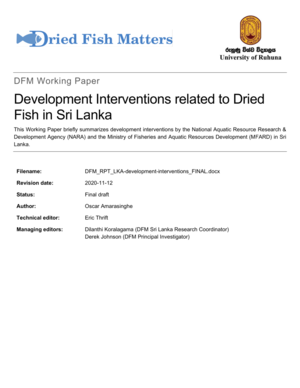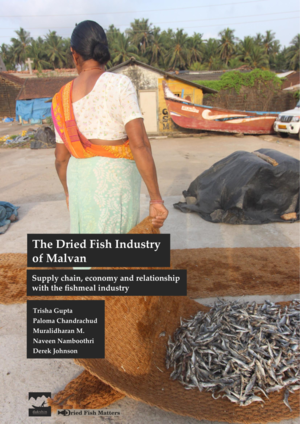DFM Working Papers

common method of preserving fish on the Karnataka coast. Performed mostly by women of fisher communities in small-scale operations, dried fish processing and marketing are important traditional livelihood options on the coast. However, in the drive for modernizing the seafood sector, the dried fish segment has long gone out of favor among policymakers as well as academics despite possessing several advantages for both producers and consumers of dried fish. In this regard, this report sets out the goal of providing a detailed description of the dried fish processing segment in the Karnataka coast so as to gain a better appreciation for the role of the dried fish value chain in the regional economy. This report is a product of the only detailed study of dried fish production in Karnataka State. The study collected primary data from dried fish processors in the three coastal districts of the state through structured interviews. A total of 271 processors were interviewed from around the nine major fishing harbors of the state. The respondents were interviewed thrice coinciding with the three major seasons in Karnataka marine fisheries, i.e., the monsoon season, post-monsoon season, and the pre-monsoon season. Through this approach, the study analyzes not only the seasonal patterns in dried fish production in the state, but also the relative size of dried fish production across the geographical markets and the major species used for processing. There were many questions that were repeated in every round of the survey, while some unique questions were included in each round to capture unique aspects of the value chain, for example impacts of the COVID-19 pandemic. A key contribution of this study is its detailed socioeconomic and demographic profile of dried fish processors. The study also explains the operation of their dried fish businesses, and their perceptions of some of the major issues facing the dried fish segment of Karnataka’s seafood value chain. The findings demonstrate the predominant role played by women in dried fish value chains, supported by the fact that about 95 percent of the respondents were women. The study suggests seasonal patterns in dried fish processing such that largest procurements of fresh fish for dried fish operations occurred in the post-monsoon period, followed by the monsoon period, with the lowest procurements taking place in the pre-monsoon period. Mangaluru is the largest production market in terms of volume of fresh fish procured for dried fish operations. In terms of fish species, anchovies and mackerel are the two most procured fish in these production markets. The study examined the capital costs, working capital, losses during production and marketing, and the marketing channels for dried fish used by the processors. Results indicate the importance of dried fish not only as a livelihood option for coastal fisher communities, but also as a source of nutrition-dense food for the regional food systems of the state. Based on its findings, the report makes recommendations for policymakers and academicians that can help improve the dried fish processing segment of the state’s seafood value chain. The dried fish processing segment has been neglected for far too long despite holding tremendous potential to create livelihoods,
improve nutritional security, and enhance fisheries sustainability.












